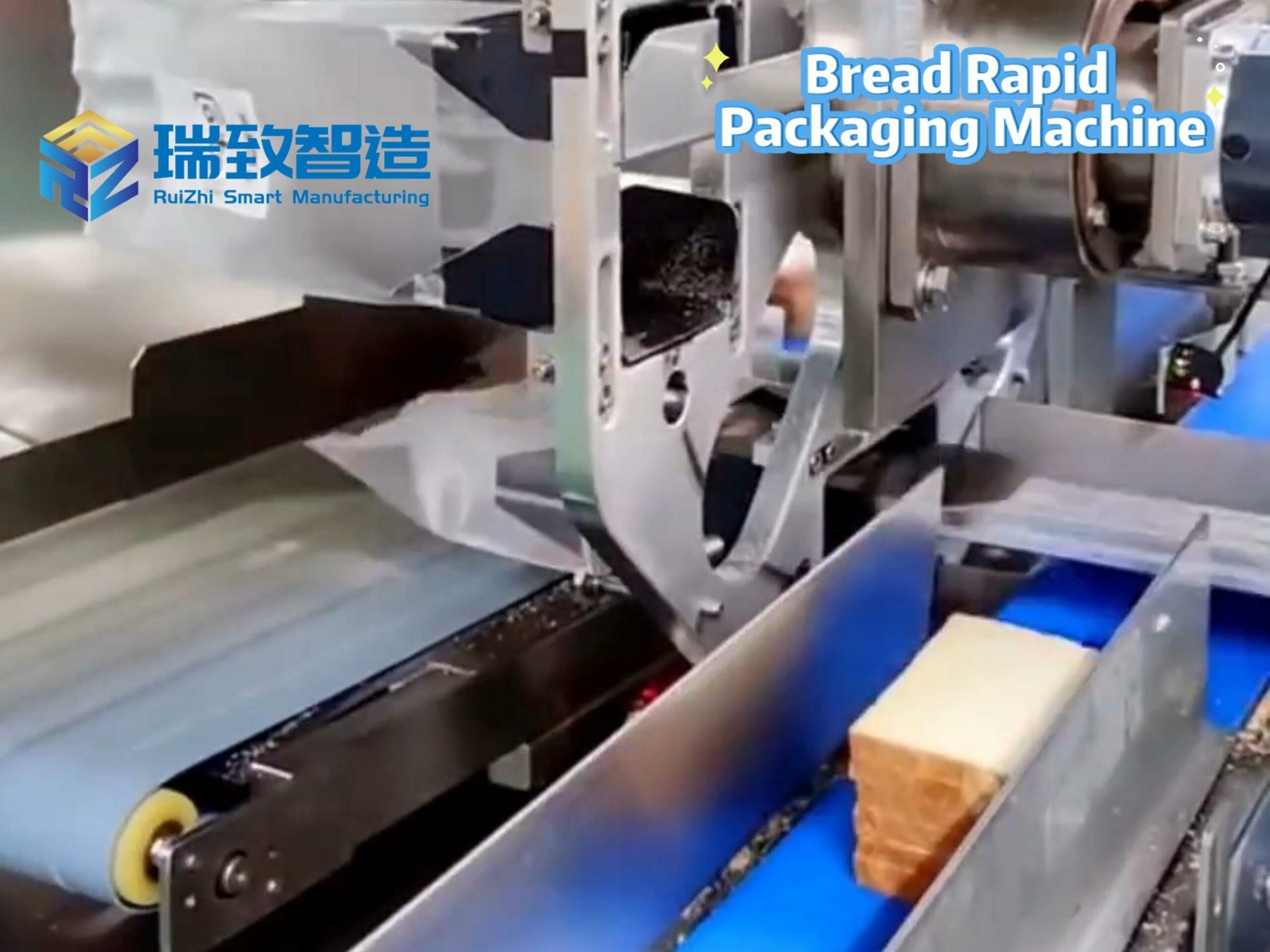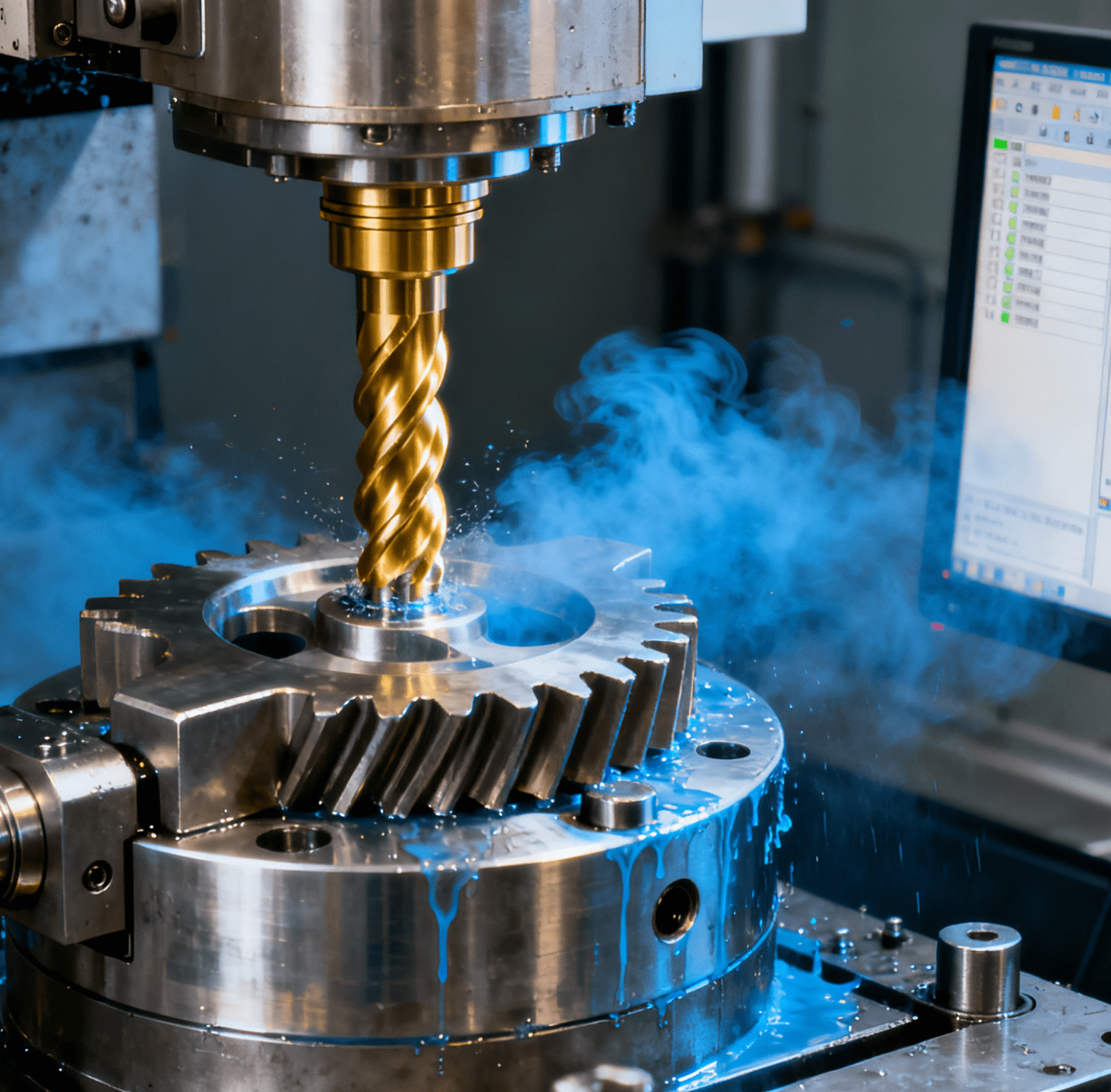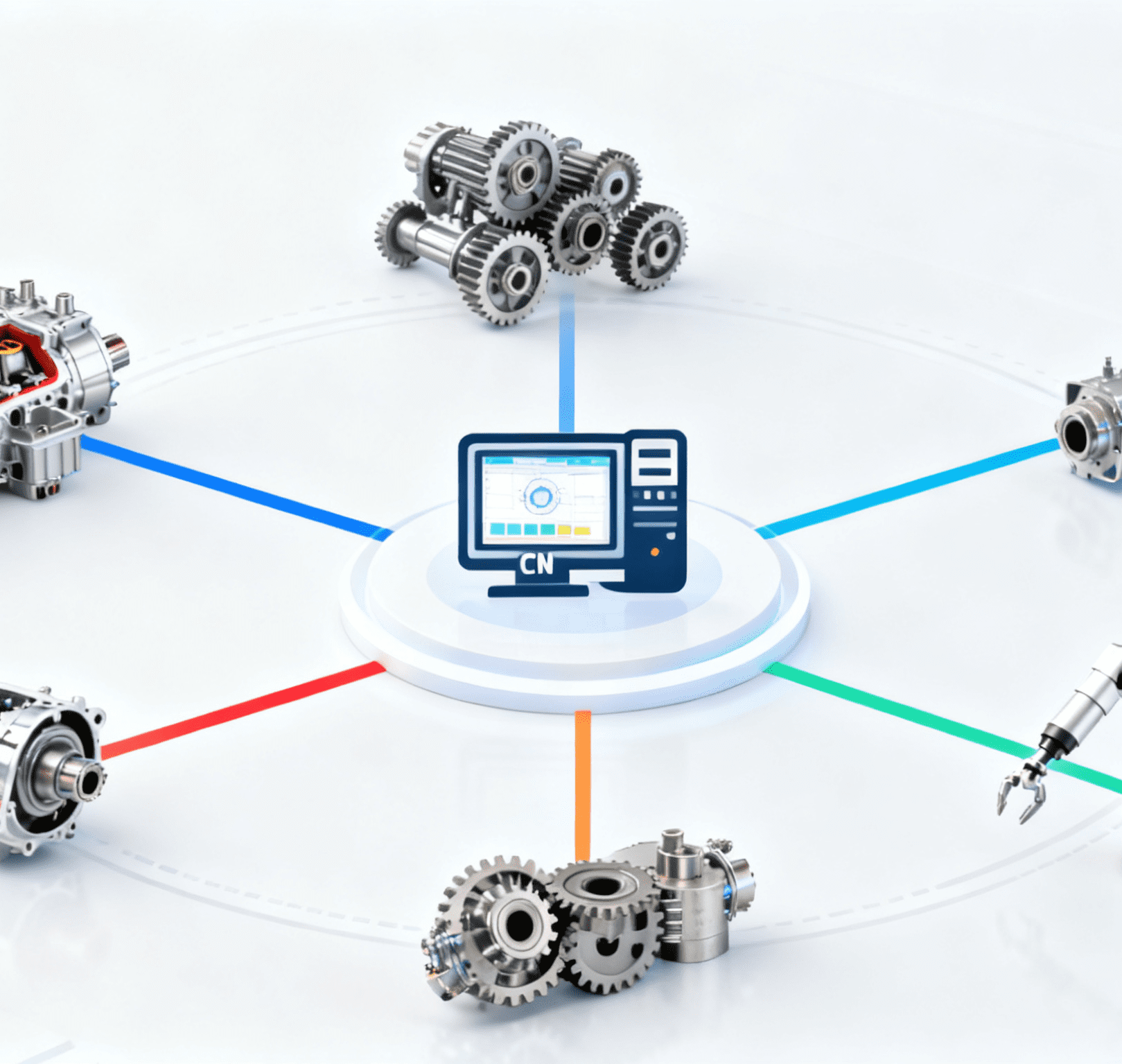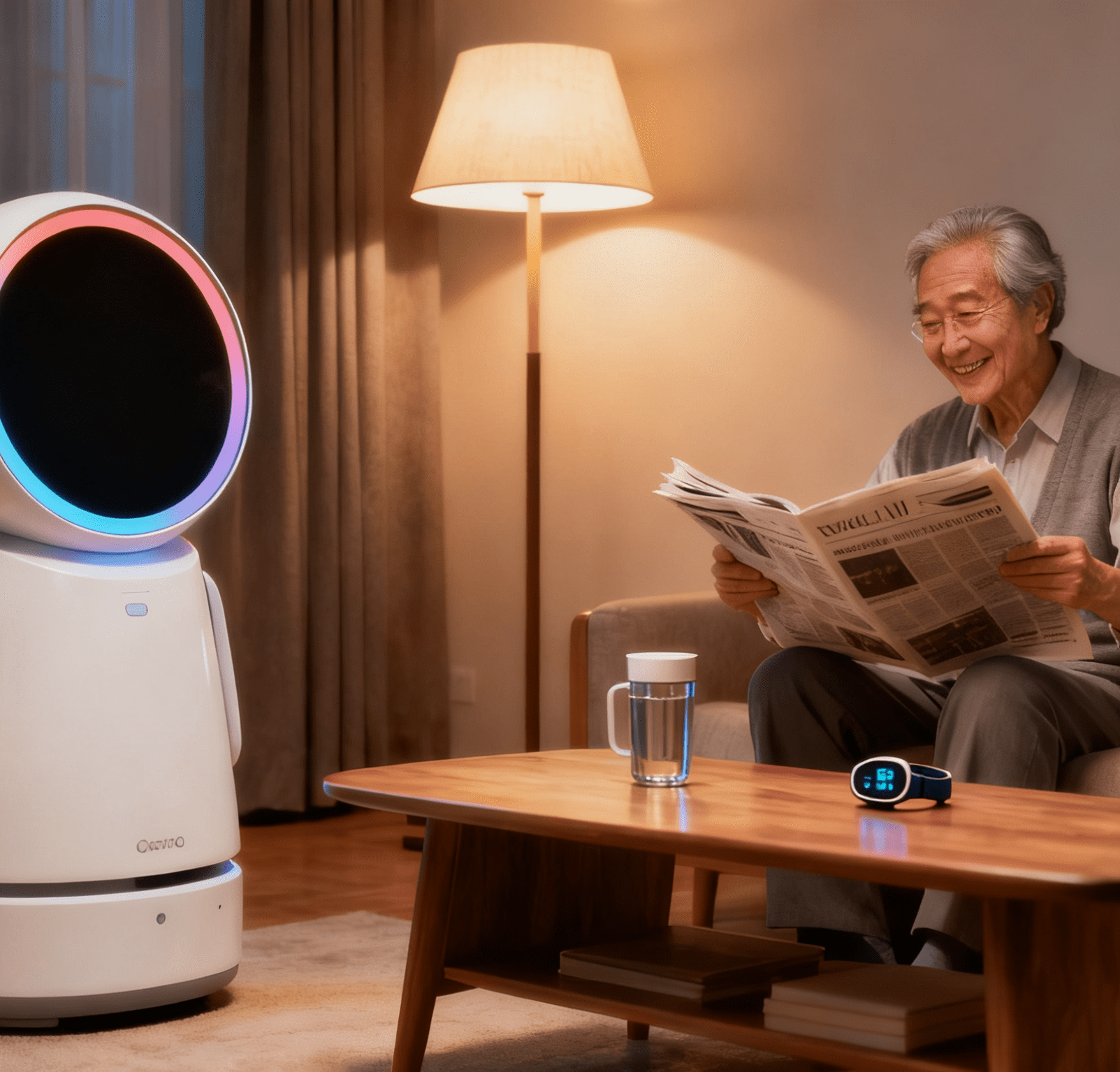Table of Contents
ToggleÄlykkään valmistuksen uusi moottori: CNC-sorvin automaattisten lastaus-/purkujärjestelmien teknologinen innovaatio ja teollisuuskäytännöt

I. Core Breakthroughs in Industrial Automation: The Paradigm Shift from Manual to Intelligent Operations
In the wave of intelligent transformation in manufacturing, CNC lathes, as core equipment for precision machining, rely on the automation level of their loading/unloading processes to directly determine production line efficiency and cost control capabilities. Traditional manual loading/unloading models suffer from critical pain points: low efficiency (30-60 seconds per piece), fluctuating precision (±0.2mm-level errors), and high labor costs (accounting for 30%-40% of total processing costs). By integrating robotic arms, visual recognition, and intelligent control technologies, CNC lathe automatic loading/unloading systems have achieved a revolutionary leap from “manual intervention” to “autonomous operation.”
Take a Zhejiang-based technology company as an example: after introducing a “CNC machining center + truss robot” system, the number of devices operated by workers per production line increased from 2-4 to 12-16, production efficiency improved by 3-4 times, and the scrap rate dropped by over 60%. This transformative change not only manifests in efficiency gains but also in significant precision optimization through real-time data monitoring and dynamic correction. For instance, an automotive parts factory achieved a spring placement accuracy improvement from ±0.5mm (manual) to ±0.03mm after adopting a vision-guided system.
II. Technical Architecture Analysis: An Intelligent Ecosystem of Multidisciplinary Integration
The core competitiveness of CNC lathe automatic loading/unloading systems stems from their sophisticated technical architecture, comprising four main modules:
1. Intelligent Robotic Arm System
As the core of the execution layer, robotic arms must meet complex requirements of high precision, speed, and load capacity. Mainstream solutions include:
- SCARA Robotic Arms: With four-axis linkage design, they achieve repeat positioning accuracy of ±0.02mm, suitable for precision component machining such as electronic connectors.
- Six-Axis Collaborative Robots: E.g., FANUC M-10iA, which enables human-robot collaboration via force-control sensors, completing multi-angle complex operations in automotive seat spring assembly.
- Truss Manipulators: Designed with a gantry structure, they support loads exceeding 50kg, commonly used for machining large shaft parts, such as landing gear components in aerospace.
2. Visual Recognition and Positioning System
Through industrial cameras and deep learning algorithms, real-time detection and dynamic compensation of workpiece poses are achieved:
- Sub-Pixel Level Positioning Technology: Using high-precision industrial cameras and self-developed algorithms, it identifies micron-level deviations in lens edges and feature points, ensuring grasping errors < ±0.05mm.
- Dynamic Defect Detection: Synchronously completes surface scratch and contamination detection during loading/unloading, improving yield by over 30%.
- Multi-Specification Compatibility: Supports diverse workpieces (e.g., 0.2-5mm wire diameter springs, 0.1mm ultra-thin lenses) with switching time reduced to <3 seconds.
3. Intelligent Control System
As the “brain” of the system, the control system enables multi-device collaboration and real-time optimization:
- PLC & Industrial PC Integration: Achieves synchronous control of robotic arms, lathes, and conveyors via Modbus protocol. For example, Huacheng Industrial Control QC-L3G system features a servo communication cycle of 250μs and current loop cycle of 62.5μs.
- Path Optimization Algorithm: Generates the shortest motion trajectory based on RRT* algorithm, reducing idle travel time and improving single-station efficiency by 15%-20%.
- MES System Docking: Enables real-time upload of production data (e.g., processing time, equipment status), supporting order scheduling and quality traceability.
4. Intelligent Logistics and Warehousing Module
- AGV & Robotic Arm Integration: A new energy battery factory uses AGV chassis combined with SCARA robotic arms to achieve seamless material handling and loading/unloading, improving logistics efficiency by 40%.
- Intelligent Tray Management: Achieves full traceability of material information via barcode scanning and positioning vision cameras, reducing misassembly rates by >90%.
III. Industry Application Scenarios: Full Coverage from Precision Manufacturing to Complex Machining
CNC lathe automatic loading/unloading systems have deeply penetrated key industries due to their flexibility and high precision:
1. Automotive Parts Manufacturing
- Case: German company Paul Horn GmbH uses KUKA KR AGILUS robots to automate loading/unloading of 35 product series of indexable inserts, shortening the processing cycle to 8.5 seconds/piece and increasing equipment utilization to 95%.
- Technical Highlights: Equipped with KUKA.AppTech modular software, supporting multi-variety, small-batch production, with changeover time compressed from 6 hours to 45 minutes.
2. Electronics & 3C Industry
- Case: A South Korean hardware factory introduced Han’s E10 collaborative robot to achieve fully automatic loading/unloading for CNC machining of pneumatic components. One robot can manage over ten machines, reducing labor costs by 70%.
- Technical Highlights: Adopts high-speed industrial collaboration mode, increasing overall speed by 35%, with IP66 protection level suitable for high-dust environments.
3. Medical Devices & Aerospace
- Case: A medical device factory achieved compatibility with 8 orthopedic implant products on a single production line through modular transformation, reducing changeover time from 6 hours to 45 minutes.
- Technical Highlights: WOMMER automatic fixture change system achieves repeat positioning accuracy of ±0.002mm, meeting high-precision machining requirements for aerospace components.
IV. Future Trends: Deep Integration of Intelligence and Green Manufacturing
Driven by Industry 4.0 and IoT technologies, CNC lathe automatic loading/unloading systems are evolving in the following directions:
1. Deep Empowerment of Artificial Intelligence
- Adaptive Learning Systems: For example, Jingke Intelligent Technology’s patented technology uses Variational Autoencoders (VAE) to autonomously optimize loading/unloading steps, improving efficiency by 30%.
- Predictive Maintenance: Based on a hybrid model of LSTM and Weibull distribution, it enables equipment fault early warning, reducing unplanned downtime by 65%.
2. Driven by 5G and Edge Computing
- Low-Latency Control Architecture: Uses UDP protocol + Forward Error Correction (FEC) technology, with control command transmission packet loss rate <0.001%, and multi-machine collaboration synchronization accuracy of ±0.1mm.
- Distributed Motion Planning: Offloads trajectory calculations to edge servers, reducing computing power demand by 70%, suitable for multi-robot collaboration scenarios.
3. Green Manufacturing and Energy Efficiency Optimization
- Energy Recovery Technology: For example, Jiahui truss manipulators’ regenerative braking system achieves 65%-85% energy recovery efficiency, reducing annual power consumption per device by 44%.
- Lightweight Design: Using carbon fiber materials and modular structures, robotic arm weight is reduced by 30%, with energy consumption decreasing by 20%.
V. Implementation Path and Challenges: From Technology Deployment to Value Conversion
When introducing automatic loading/unloading systems, enterprises should focus on key aspects:
1. Requirement Analysis and Solution Customization
- Process Adaptability: Select robotic arm types based on workpiece characteristics (e.g., weight, shape). SCARA is suitable for planar handling, while six-axis robots excel in complex surface operations.
- ROI Calculation: For example, a 3C enterprise saved ~800,000 RMB in annual labor costs per production line after introducing truss manipulators, with a payback period of only 14 months.
2. System Integration and Debugging
- Multi-Device Compatibility: Ensure unified communication protocols for robotic arms, lathes, and vision systems (e.g., OPC UA standard for seamless docking).
- Safety Protection Design: Equip with light curtains, emergency stop buttons, and collision detection functions, compliant with ISO 10218 safety standards.
3. Data-Driven Continuous Optimization
- Real-Time Monitoring Platform: Visualize indicators like OEE and cycle time via BI tools. For example, an automotive factory improved OEE from 65% to 82% through data optimization.
- Remote Operation Capability: Supports 5G remote diagnosis and parameter adjustment, reducing fault response time to <15 minutes.
Conclusion
As core infrastructure for smart manufacturing, CNC lathe automatic loading/unloading systems are reshaping the manufacturing landscape through technological innovation and model transformation. From single-machine automation to full-line intelligence, and from precision machining to complex manufacturing, their application depth and breadth continue to expand. With the deep integration of AI, 5G, and IoT technologies, this field will embrace broader development, providing strong momentum for enterprises to achieve cost reduction, efficiency improvement, quality upgrading, and sustainable development. In the future, balancing technological innovation with cost control and building an open, win-win industrial ecosystem through ecological cooperation will become key propositions for industry development.




















